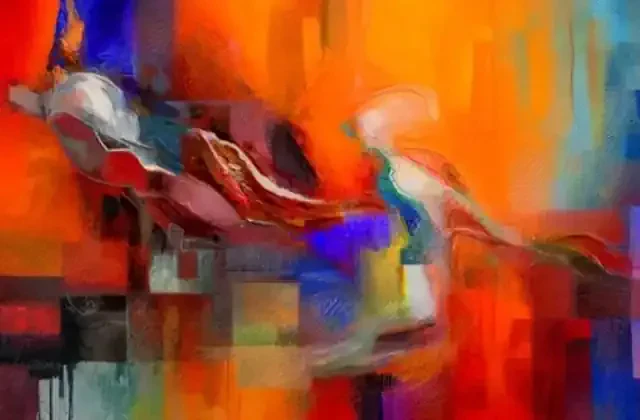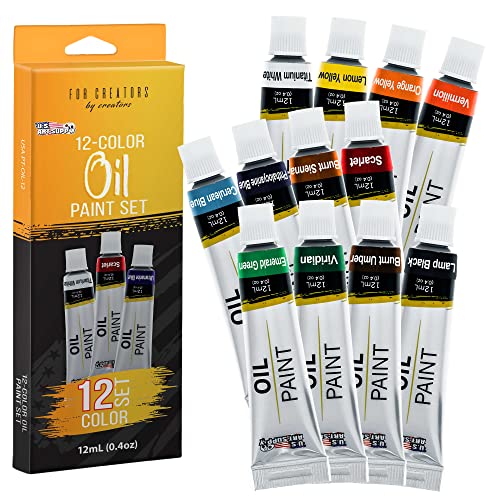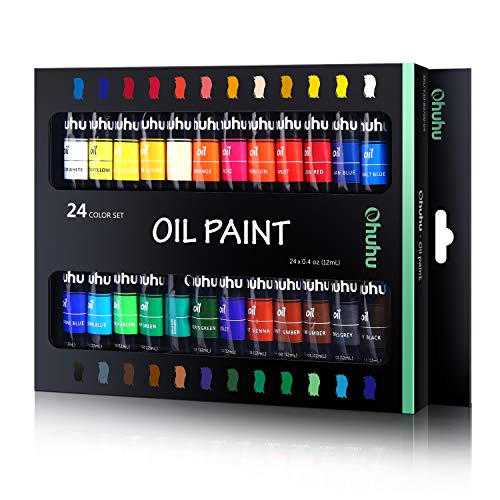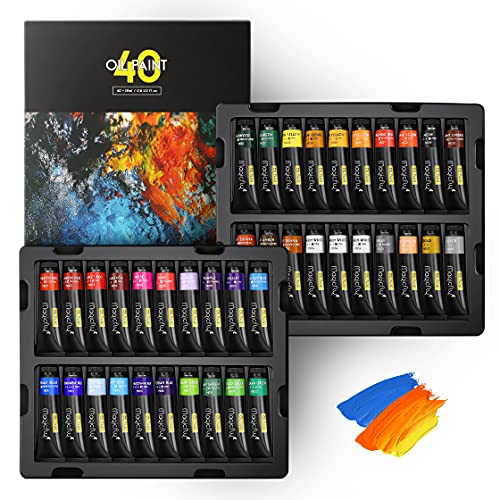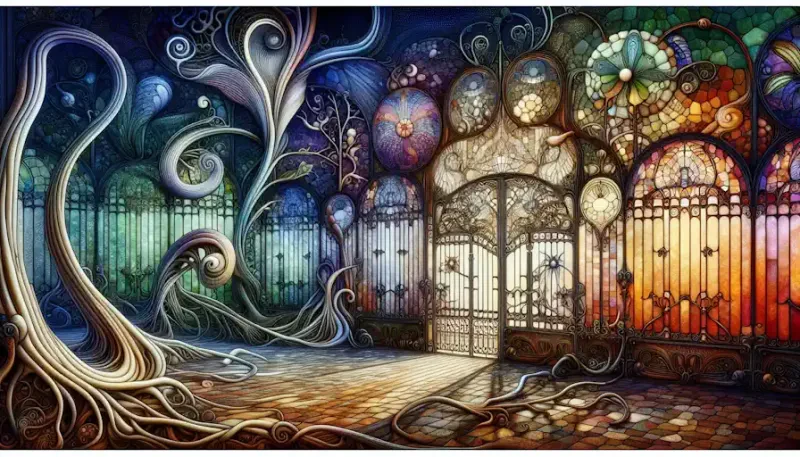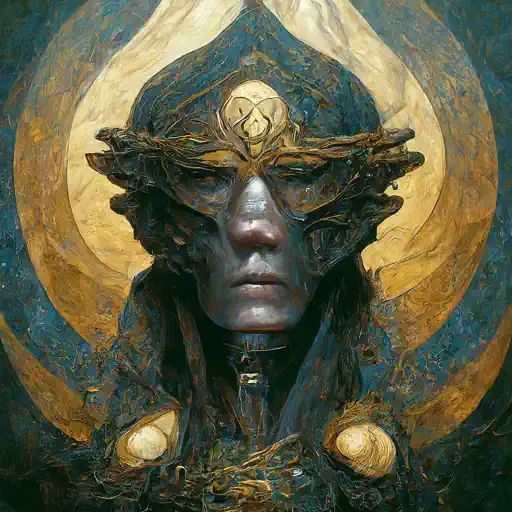Introduction
Oil painting stands as one of the most revered and timeless forms of artistic expression, revered for its rich history, unparalleled versatility, and enduring allure. In this section, we delve into the essence of oil painting, tracing its evolution through the annals of art history and highlighting its paramount importance in contemporary artistic practice.
Definition and Significance of Oil Painting
At its core, oil painting is a medium wherein pigments are suspended in oils, typically linseed oil, creating a blend of colors that offer depth, luminosity, and longevity. This medium has captured the imagination of artists for centuries, providing a canvas for boundless creativity and expression. The significance of oil painting lies not only in its technical prowess but also in its ability to encapsulate emotions, convey narratives, and evoke profound sentiments through strokes of color and texture.
Historical Evolution and Enduring Appeal
The origins of oil painting can be traced back to ancient civilizations, with early examples found in the murals of ancient Egypt and Greece. However, it wasn't until the Renaissance that oil painting truly flourished, with masters such as Leonardo da Vinci, Rembrandt, and Titian pushing the boundaries of artistic achievement. During this period, oil painting became synonymous with realism, enabling artists to capture the intricacies of the human form, the play of light, and the subtleties of nature with unprecedented fidelity. Since then, oil painting has continued to evolve, adapting to changing artistic movements while retaining its timeless appeal and universal resonance.
Importance of Mastering Oil Painting Techniques in Contemporary Art
In today's art scene, oil painting remains a cornerstone of artistic practice, revered for its versatility, expressiveness, and archival quality. Mastery of oil painting techniques is essential for artists seeking to convey their vision with clarity and conviction. Whether exploring traditional realism, avant-garde abstraction, or experimental mixed media approaches, a solid foundation in oil painting techniques empowers artists to push the boundaries of their craft, innovate new forms of expression, and engage with audiences on a profound and emotive level. Moreover, amidst the proliferation of digital mediums and technological advancements, oil painting endures as a testament to the enduring power of the handmade, the tactile, and the timeless in an ever-evolving artistic landscape.
Essential Materials and Supplies
Oil paints
Oil paints serve as the lifeblood of oil painting, offering a rich array of colors and textures for artists to explore and manipulate. Composed of pigments suspended in linseed oil or other drying oils, oil paints provide artists with a versatile medium capable of achieving vibrant hues, subtle gradients, and expressive brushwork. Available in tubes or jars, oil paints come in a wide range of quality levels, from student-grade to professional-grade, allowing artists of all levels to find the perfect balance of pigment intensity, handling properties, and archival longevity for their artistic endeavors.
Brushes and palette knives
Brushes and palette knives are indispensable tools in the oil painter's arsenal, enabling precise application, blending, and manipulation of paint on the canvas. Brushes come in various shapes, sizes, and bristle types, each suited to specific techniques and effects, from fine detail work to broad, gestural strokes. Palette knives, with their flat, flexible blades, are ideal for mixing colors on the palette, applying thick impasto textures, and creating bold, sculptural effects on the canvas. Together, brushes and palette knives empower artists to explore a wide range of textures, marks, and expressions in their oil paintings.
Painting surfaces (canvas, wood panels, etc)
Selecting the right painting surface is essential for achieving optimal results in oil painting. Canvas, with its flexibility, durability, and texture, is the most common support for oil paintings, available in stretched or unstretched formats to suit various preferences and painting styles. Wood panels offer a firm, stable surface with minimal give, ideal for detailed work and fine brushwork. Other options, such as paper, metal, or even unconventional materials, offer artists endless possibilities for experimentation and creative exploration in their oil painting practice.
Solvents and mediums
Solvents and mediums play a vital role in the preparation, manipulation, and preservation of oil paints. Solvents such as turpentine or odorless mineral spirits are used for thinning paint, cleaning brushes, and controlling drying times, while mediums, such as linseed oil, stand oil, or gel mediums, alter the consistency, transparency, and drying properties of the paint, allowing for various techniques, effects, and finishes. Understanding the properties and proper use of solvents and mediums is essential for achieving desired results and ensuring the longevity of oil paintings.
Palette
A palette serves as the artist's mixing station, providing a flat, smooth surface for blending colors, testing mixtures, and organizing pigments during the painting process. Palettes come in a variety of materials, including traditional wooden palettes, disposable palette pads, and glass or acrylic sheets, each offering distinct advantages in terms of ease of use, cleanup, and color clarity. Whether using a handheld palette or a tabletop palette, artists rely on this essential tool to achieve precise color matching, temperature control, and compositional harmony in their oil paintings.
Easel
An easel provides essential support and stability for the painting surface, allowing artists to work comfortably at an upright angle and adjust the position of the canvas as needed. Easels come in a range of styles and sizes, from traditional studio easels to portable plein air easels, each designed to accommodate different working environments, canvas sizes, and artistic preferences. Whether painting in the studio, en plein air, or on location, a sturdy, well-designed easel is essential for creating optimal conditions for focused, uninterrupted painting sessions.
Rags or paper towels
Rags or paper towels are indispensable for maintaining a clean, organized workspace and controlling excess paint during the oil painting process. Used for wiping brushes, cleaning spills, and blotting excess paint from the canvas, rags or paper towels help artists maintain control over their materials, avoid contamination between colors, and achieve crisp, precise brushwork. Whether working with solvent-based or water-based mediums, having a supply of rags or paper towels on hand ensures artists can navigate the painting process with confidence and efficiency.
Palette knife
A palette knife is a versatile tool used for mixing paint on the palette, applying paint to the canvas, and creating textured effects in oil painting. With its flat, flexible blade and sturdy handle, the palette knife allows artists to achieve a wide range of effects, from smooth, controlled strokes to bold, expressive gestures. Available in various shapes, sizes, and materials, palette knives offer artists endless opportunities for experimentation and innovation in their oil painting practice, enabling them to push the boundaries of texture, color, and form in their artistic explorations.
Containers for solvents and mediums
Containers for solvents and mediums are essential for safely storing, dispensing, and disposing of these essential materials in the oil painting studio. Whether using glass jars, plastic containers, or metal cans, it's important to choose containers with secure lids, ample capacity, and clear labeling to prevent spills, evaporation, and contamination. Properly storing solvents and mediums helps ensure their longevity, potency, and safety, allowing artists to focus on their creative process without worrying about the integrity of their materials.
Protective gear (gloves, apron)
Protective gear such as gloves and aprons are essential for maintaining a safe, clean working environment and protecting artists from potential hazards associated with oil painting materials. Disposable gloves help prevent direct skin contact with solvents and paints, reducing the risk of irritation, allergic reactions, and absorption of harmful chemicals. An apron shields clothing from stains, spills, and splatters, ensuring artists can work comfortably and confidently without fear of ruining their attire. By prioritizing safety and cleanliness, artists can enjoy a productive, rewarding oil painting practice while minimizing risks to their health and well-being.
Preparing Your Workspace
Creating the ideal workspace is essential for a productive and enjoyable oil painting experience. Here's how to set up your studio for success:
Setting up a Well-Ventilated Area
Proper ventilation is crucial when working with oil paints and solvents, as these materials can release harmful fumes and vapors. Choose a well-ventilated area for your painting studio, preferably with windows that can be opened to allow fresh air to circulate. If working in a confined space, consider using a ventilation fan or air purifier to ensure adequate airflow and minimize exposure to potentially hazardous fumes.
Proper Lighting for Accurate Color Perception
Good lighting is essential for accurately assessing colors and values while painting. Natural daylight is ideal for painting, as it provides the most accurate representation of colors. Position your easel near a window or set up a daylight lamp to mimic natural sunlight. Avoid harsh overhead lighting or fluorescent bulbs, as these can distort colors and create glare on the canvas.
Organizing Materials for Efficiency
A well-organized workspace contributes to a smoother painting process and helps maintain focus and concentration. Keep your painting materials and tools neatly arranged and easily accessible. Use storage containers, shelving units, or wall-mounted organizers to store brushes, paints, mediums, and other supplies. Create designated areas for mixing palettes, cleaning stations, and drying racks to streamline your workflow and minimize clutter.
Safety Precautions and Handling of Solvents
Safety should always be a top priority when working with oil painting materials. Familiarize yourself with the proper handling and disposal procedures for solvents, mediums, and other potentially hazardous substances. Wear protective gear such as gloves, aprons, and safety goggles to prevent skin contact, inhalation, and eye irritation. Avoid eating, drinking, or smoking in the studio, and wash your hands thoroughly after handling paints and solvents. Properly ventilate the area to minimize exposure to fumes and ensure a safe and healthy painting environment for yourself and others.
Fundamentals of Oil Painting Techniques
Oil painting is a versatile and expressive medium that offers artists a wide range of techniques for creating stunning works of art. Mastering these fundamental techniques is essential for artists looking to explore the boundless possibilities of oil painting. Here's a breakdown of the key techniques every oil painter should strive to master:
Understanding Color Theory and Mixing
Color theory forms the foundation of all visual art, including oil painting. By understanding the principles of color theory, artists can create harmonious and dynamic color palettes that convey mood, atmosphere, and emotion. Experiment with mixing primary, secondary, and tertiary colors to create a vast array of hues and shades. Learn how to manipulate color temperature, value, and saturation to create depth, contrast, and visual interest in your paintings. Develop your color-mixing skills through practice and observation, paying close attention to the subtle nuances of color relationships and harmonies.
Mastering Brushwork and Application Techniques
Brushwork is a fundamental aspect of oil painting, allowing artists to apply paint to the canvas with precision, control, and expression. Experiment with different brush shapes, sizes, and bristle types to achieve a variety of effects and textures. Practice controlled brushwork for detailed rendering and expressive strokes for bold, gestural marks. Explore techniques such as dry brushing, wet-on-wet blending, scumbling, and stippling to create depth, dimension, and visual interest in your paintings. Develop a sensitivity to brush pressure, angle, and direction to manipulate paint and create dynamic, engaging compositions.
Exploring Composition and Design Principles
Composition and design are essential elements of successful oil paintings, guiding the viewer's eye and creating a sense of balance, harmony, and unity within the picture plane. Study the principles of composition, including the rule of thirds, golden ratio, leading lines, and focal points, to create dynamic and visually compelling compositions. Experiment with different cropping and framing techniques to emphasize key elements and create a sense of depth and movement in your paintings. Consider the placement of shapes, colors, and forms within the composition to convey mood, narrative, and emotion effectively. Develop your compositional skills through observation, analysis, and experimentation, honing your ability to create engaging and impactful visual narratives.
Layering and Building Texture
Layering is a hallmark technique of oil painting, allowing artists to build depth, richness, and complexity in their work. Experiment with layering thin glazes of translucent color to create luminous, jewel-like effects. Explore alla prima (wet-on-wet) painting techniques to capture spontaneity and freshness in your brushwork. Build up texture using impasto techniques, applying thick layers of paint with palette knives or bristle brushes to create tactile surfaces and dynamic interplays of light and shadow. Experiment with scraping, scratching, and scraping back techniques to reveal underlying layers and add visual interest to your paintings.
Creating Depth and Atmosphere
Creating a sense of depth and atmosphere is essential for creating immersive and captivating oil paintings. Utilize techniques such as perspective, value, color temperature, and atmospheric effects to convey spatial depth, distance, and mood within your compositions. Experiment with techniques such as linear perspective, atmospheric perspective, and aerial perspective to create convincing illusions of depth and space. Use value contrasts, warm and cool color temperatures, and subtle atmospheric effects to suggest distance, atmosphere, and mood in your paintings. By mastering these fundamental techniques, artists can create oil paintings that resonate with depth, atmosphere, and emotional resonance, captivating viewers and inviting them into rich and evocative visual worlds.
Step-by-Step Guide to Painting with Oils
Embarking on an oil painting journey involves a series of deliberate steps that culminate in the creation of a captivating artwork. Here's a step-by-step guide to painting with oils, from the initial sketch to the final varnishing:
Sketching and Planning the Composition
Begin by sketching out your composition on the canvas using a pencil or charcoal. Consider the placement of elements, the overall composition, and the mood you wish to convey. Take the time to refine your sketch, making adjustments as needed to achieve a balanced and compelling composition.
Blocking in Initial Colors and Shapes
Once you're satisfied with your sketch, begin blocking in the initial colors and shapes using thinned-down paint. Use large brushes and broad strokes to establish the basic forms and color relationships within your composition. Focus on capturing the overall mood and atmosphere of the scene, rather than getting bogged down in details at this stage.
Building up Layers and Refining Details
With the initial block-in complete, start building up layers of paint to add depth, dimension, and texture to your painting. Work from general to specific, gradually refining the details and adding layers of color to achieve the desired effects. Experiment with different brushwork techniques, layering methods, and paint consistencies to create visual interest and complexity within your painting.
Adding Final Touches and Accents
As your painting nears completion, take the time to add final touches and accents that enhance the overall impact and visual appeal of your artwork. Pay attention to areas of focus, adding highlights, shadows, and details to draw the viewer's eye and create a sense of depth and dimension. Use contrast, texture, and color to create visual interest and convey mood and emotion within your painting.
Drying and Varnishing for Preservation
Once your painting is complete, allow it to dry thoroughly before applying a final varnish to protect and preserve the surface. Varnishing not only enhances the colors and depth of your painting but also provides a protective barrier against dust, dirt, and UV damage. Choose a varnish that is compatible with oil paints and apply it according to the manufacturer's instructions. Allow the varnish to dry completely before framing or displaying your artwork.
By following this step-by-step guide, artists can navigate the process of oil painting with confidence and creativity, producing artworks that captivate and inspire viewers for years to come. Experimentation, practice, and patience are key to mastering the art of oil painting and unlocking the full potential of this versatile and expressive medium.
Advanced Techniques and Experimental Approaches
As artists gain proficiency in oil painting, they often seek to push the boundaries of their practice, experimenting with innovative techniques and exploring new avenues of creative expression. Here are some advanced techniques and experimental approaches that artists can explore to further develop their skills and expand their artistic horizons:
Exploring Different Styles and Genres
Delve into various artistic styles and genres to expand your artistic repertoire and find your unique voice as an artist. Experiment with realism, impressionism, expressionism, abstraction, surrealism, and other artistic movements to explore different approaches to composition, color, form, and expression. Study the works of master artists and contemporary innovators to gain insights into their techniques and philosophies, then adapt and integrate these influences into your own artistic practice.
Mixed Media Techniques Incorporating Oil Painting
Embrace the versatility of oil painting by incorporating it into mixed media artworks that combine multiple mediums and materials. Experiment with combining oil paints with acrylics, watercolors, ink, pastels, collage, found objects, and digital elements to create dynamic and multi-dimensional compositions. Explore the unique properties and interactions of different mediums to create innovative textures, effects, and visual contrasts within your artworks.
Using Unconventional Tools and Materials
Think outside the box and experiment with unconventional tools and materials to create unexpected effects and textures in your oil paintings. Explore alternative painting implements such as sponges, rollers, palette knives, and even fingers to apply paint to the canvas in unconventional ways. Experiment with non-traditional surfaces such as wood, metal, fabric, and found objects to create unique and experimental artworks that challenge traditional notions of painting and representation.
Pushing Boundaries and Breaking Traditional Rules
Don't be afraid to push the boundaries of traditional oil painting techniques and conventions to create bold and innovative artworks that reflect your personal vision and artistic sensibility. Challenge yourself to break free from traditional rules and expectations, embracing experimentation, spontaneity, and risk-taking in your creative process. Embrace imperfection, uncertainty, and ambiguity as opportunities for growth and discovery, allowing yourself to explore new ideas and possibilities without fear of failure or judgment.
By embracing advanced techniques and experimental approaches in their oil painting practice, artists can push the boundaries of their creativity, expand their artistic horizons, and create truly unique and innovative artworks that captivate and inspire viewers. Experimentation, exploration, and a willingness to take risks are essential for artists seeking to break new ground and make their mark on the ever-evolving landscape of contemporary art.
Troubleshooting and Common Mistakes
Even the most experienced oil painters encounter challenges and make mistakes during their artistic journey. Learning how to troubleshoot and overcome common issues is essential for refining your skills and creating successful oil paintings. Here are some common problems and strategies for addressing them:
Dealing with Muddy Colors and Overmixing
Muddy colors occur when too many colors are mixed together, resulting in a dull, lifeless appearance. To avoid muddy colors, limit your palette to a few key colors and mix them intentionally to create harmonious blends. Avoid overmixing by using a light touch and allowing colors to mingle on the canvas rather than on the palette. If you do end up with muddy colors, try adding a touch of a complementary color or a high-value color to brighten and revive the mixture.
Managing Drying Times and Paint Consistency
Oil paints have varying drying times depending on factors such as pigment, medium, and environmental conditions. To manage drying times, work with a combination of fast-drying and slow-drying mediums to achieve the desired balance between blending and layering. Experiment with different paint consistencies, from thin washes to thick impasto, to create a range of effects and textures. If paint starts to dry too quickly, use a retarder or solvent to extend working time, or work wet-on-wet to keep the paint fluid and workable.
Correcting Mistakes Without Compromising the Painting
Mistakes are inevitable in oil painting, but they can often be corrected or incorporated into the final artwork without compromising its integrity. If you make a mistake, resist the urge to panic or immediately cover it up. Instead, take a step back and assess the situation calmly. Depending on the severity of the mistake, you may be able to adjust the painting by scraping, wiping, or blending the area, or by adding additional layers of paint to cover it up. Alternatively, you can embrace the mistake as a chance to experiment and improvise, incorporating it into the overall composition in a creative and unexpected way.
Avoiding Common Pitfalls in Composition and Design
Composition and design play a crucial role in the success of an oil painting. Avoid common pitfalls such as overly centered compositions, cluttered or unbalanced arrangements, and repetitive or predictable elements. Instead, strive for balance, harmony, and visual interest by carefully considering the placement of shapes, colors, and forms within the composition. Experiment with different cropping and framing techniques to create dynamic and engaging compositions that draw the viewer's eye and evoke a sense of movement, rhythm, and narrative.
By learning how to troubleshoot common problems and avoid common mistakes, oil painters can enhance their skills, refine their techniques, and create more successful and satisfying artworks. Remember that mistakes are an inherent part of the creative process and an opportunity for growth and learning. Embrace challenges as opportunities for experimentation and exploration, and don't be afraid to take risks and push the boundaries of your artistic practice.
Finding Inspiration and Developing Your Style
Finding inspiration and developing a unique artistic style are essential aspects of an artist's journey. Here are some strategies for cultivating inspiration and honing your artistic voice:
Studying the Works of Master Artists
Study the works of master artists from various periods and artistic movements to gain insights into their techniques, styles, and approaches to painting. Analyze their compositions, color palettes, brushwork, and subject matter to deepen your understanding of art history and broaden your artistic vocabulary. Draw inspiration from the masters while also striving to develop your own unique voice and perspective.
Experimenting with Various Subjects and Themes
Explore a wide range of subjects, themes, and motifs in your artwork to expand your artistic repertoire and discover what resonates with you personally. Experiment with landscapes, still lifes, portraits, figurative art, abstracts, and other genres to challenge yourself and push the boundaries of your creativity. Be open to exploring new ideas, techniques, and styles, and allow yourself the freedom to follow your artistic instincts and interests.
Keeping a Sketchbook for Ideas and Studies
Keep a sketchbook or visual journal to record ideas, observations, sketches, and studies that inspire you. Use your sketchbook as a playground for experimentation, exploration, and brainstorming, allowing yourself the freedom to make mistakes and take risks without the pressure of creating finished artworks. Sketch from life, from imagination, or from reference photos, and use your sketches as a springboard for developing more polished paintings.
Reflecting on Personal Experiences and Emotions
Draw inspiration from your own life experiences, memories, and emotions to infuse your artwork with authenticity, depth, and meaning. Explore themes and subjects that resonate with you personally, whether it's a specific place, a cherished object, a beloved pet, or a meaningful moment in time. Use your artwork as a means of self-expression and introspection, allowing yourself to tap into your innermost thoughts, feelings, and experiences.
By immersing yourself in the works of master artists, experimenting with various subjects and themes, keeping a sketchbook for ideas and studies, and reflecting on personal experiences and emotions, you can cultivate a rich and diverse wellspring of inspiration and develop a unique artistic style that reflects your individuality, creativity, and vision. Remember that finding your artistic voice is an ongoing journey of exploration and self-discovery, so don't be afraid to experiment, take risks, and trust in your instincts as you continue to evolve as an artist.
Conclusion
Throughout this guide, we've explored the rich and rewarding world of oil painting, from its foundational techniques to advanced approaches and experimental methods. Let's recap the key points covered and offer some final thoughts on the enduring allure and versatility of oil painting:
Recap of Key Points Covered
We began by discussing the definition and significance of oil painting, tracing its historical evolution and exploring its enduring appeal in contemporary art.
We then delved into the essential materials and supplies needed for oil painting, from paints and brushes to surfaces and solvents.
Next, we explored fundamental oil painting techniques, including color theory, brushwork, composition, layering, and creating depth and atmosphere.
We provided a step-by-step guide to painting with oils, outlining the process from sketching and blocking in colors to adding final touches and varnishing.
We discussed advanced techniques and experimental approaches, such as exploring different styles and genres, incorporating mixed media, and pushing boundaries.
Finally, we addressed common challenges and mistakes in oil painting, offering troubleshooting tips and strategies for overcoming obstacles.
Encouragement for Continued Practice and Exploration
As you continue your journey in oil painting, remember that practice and exploration are essential for growth and mastery. Embrace challenges as opportunities for learning and experimentation, and don't be afraid to push the boundaries of your creativity. Keep an open mind, stay curious, and be willing to explore new ideas and techniques as you develop your unique artistic style.
Final Thoughts on the Timeless Allure and Versatility of Oil Painting
Oil painting has captivated artists and audiences for centuries with its timeless allure, unparalleled depth, and expressive potential. Its versatility allows artists to explore a wide range of subjects, styles, and techniques, from traditional realism to experimental abstraction. Whether capturing the luminosity of light, the vibrancy of color, or the subtleties of emotion, oil painting offers endless possibilities for creative expression and artistic exploration.
As you embark on your own artistic journey with oil painting, remember to trust in your instincts, embrace the process, and find joy in the act of creation. With dedication, passion, and perseverance, you can unlock the full potential of this beautiful and timeless medium, creating artworks that inspire, provoke, and endure for generations to come.
